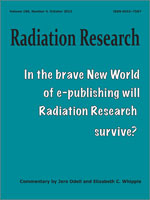A recent report shows that more than 30% of the astronauts returning from Space Shuttle missions or the International Space Station (ISS) were diagnosed with eye problems that can cause reduced visual acuity. We investigate here whether spaceflight environment-associated retinal damage might be related to oxidative stress-induced mitochondrial apoptosis. Female C57BL/6 mice were flown in the space shuttle Atlantis (STS-135), and within 3–5 h of landing, the spaceflight and ground-control mice, similarly housed in animal enclosure modules (AEMs) were euthanized and their eyes were removed for analysis. Changes in expression of genes involved in oxidative stress, mitochondrial and endothelial cell biology were examined. Apoptosis in the retina was analyzed by caspase-3 immunocytochemical analysis and terminal deoxynucleotidyl transferase-mediated dUTP nick-end labeling (TUNEL) assay. Levels of 4-hydroxynonenal (4-HNE) protein, an oxidative specific marker for lipid peroxidation were also measured. Evaluation of spaceflight mice and AEM ground-control mice showed that expression of several genes playing central roles in regulating the mitochondria-associated apoptotic pathway were significantly altered in mouse ocular tissue after spaceflight compared to AEM ground-control mice. In addition, the mRNA levels of several genes, which are responsible for regulating the production of reactive oxygen species were also significantly up-regulated in spaceflight samples compared to AEM ground-control mice. Further more, the level of HNE protein was significantly elevated in the retina after spaceflight compared to controls. Our results also revealed that spaceflight conditions induced significant apoptosis in the retina especially inner nuclear layer (INL) and ganglion cell layer (GCL) compared to AEM ground controls. The data provided the first evidence that spaceflight conditions induce oxidative damage that results in mitochondrial apoptosis in the retina. This data suggest that astronauts may be at increased risk for late retinal degeneration.
How to translate text using browser tools
13 September 2013
Spaceflight Environment Induces Mitochondrial Oxidative Damage in Ocular Tissue
Xiao W. Mao,
Michael J. Pecaut,
Louis S. Stodieck,
Virginia L. Ferguson,
Ted A. Bateman,
Mary Bouxsein,
Tamako A. Jones,
Maria Moldovan,
Christopher E. Cunningham,
Jenny Chieu,
Daila S. Gridley
ACCESS THE FULL ARTICLE

Radiation Research
Vol. 180 • No. 4
October 2013
Vol. 180 • No. 4
October 2013




